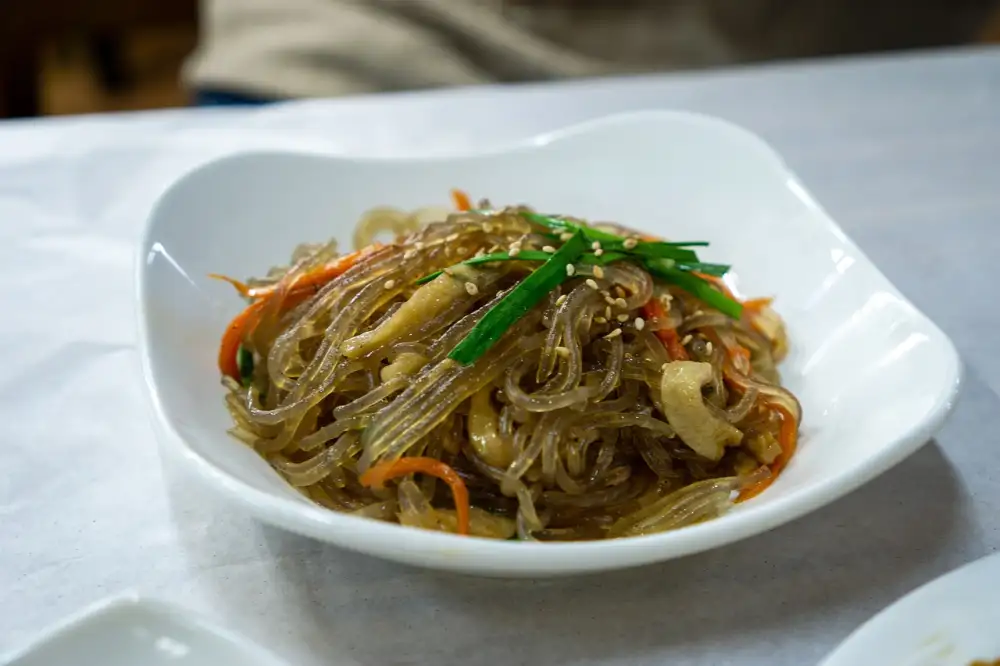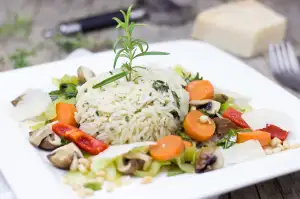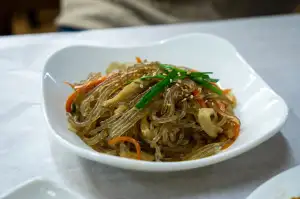Savor the Flavor: Authentic Chop Suey Recipe to Delight Your Taste Buds

Chop Suey is a classic Chinese-American dish that has become popular worldwide for its delicious flavors and versatility. Originating in the United States in the late 19th century, Chop Suey is a stir-fry dish typically made with a combination of meat (such as chicken, pork, or beef), mixed vegetables (like cabbage, carrots, and bell peppers), and a savory sauce. The name "Chop Suey" is believed to have Cantonese roots, meaning "assorted pieces" or "odds and ends," reflecting the dish's diverse ingredients. With its blend of textures and flavors, Chop Suey offers a satisfying and comforting meal that is easy to prepare at home.
Ingredients required for Chop Suey
To create a delicious Chop Suey dish, you will need the following ingredients:
1. Protein: Typically, you can use chicken, beef, pork, shrimp, or tofu.
2. Vegetables: Common choices include bell peppers, celery, carrots, onions, and mushrooms.
3. Sauce: A mixture of soy sauce, oyster sauce, and cornstarch for thickening.
4. Seasonings: Garlic, ginger, and sometimes chili paste for added flavor.
5. Oil: Sesame oil or vegetable oil for stir-frying.
6. Noodles or rice: Traditionally served over steamed rice or with crispy noodles on top.
These ingredients come together to create a harmonious blend of flavors and textures that make Chop Suey a beloved Chinese-American dish.
Step-by-step instructions on how to prepare Chop Suey
To prepare a delicious Chop Suey dish, start by heating oil in a large skillet or wok over medium-high heat. Add diced chicken or tofu and cook until browned. Next, add sliced carrots, bell peppers, and onions to the skillet and stir-fry for a few minutes until they begin to soften. In a separate bowl, mix together soy sauce, oyster sauce, and cornstarch with water to create a sauce. Pour the sauce over the vegetables and chicken/tofu in the skillet. Stir well to combine all ingredients and let it simmer until the sauce thickens. Serve hot over steamed rice and enjoy your flavorful Chop Suey!
Variations and customization options for Chop Suey
Variations and customization options for Chop Suey are endless, allowing you to tailor the dish to your preferences. You can add a variety of protein such as chicken, beef, shrimp, tofu, or even a combination for a more diverse flavor profile. Vegetables like bell peppers, broccoli, mushrooms, and water chestnuts can be included for added texture and nutrition. To enhance the sauce, you can experiment with different seasonings like soy sauce, oyster sauce, hoisin sauce, or even a touch of chili paste for some heat. Feel free to adjust the level of sweetness or saltiness according to your taste buds.
Serving suggestions and accompaniments for Chop Suey
When serving Chop Suey, consider pairing it with steamed white rice or noodles to soak up the flavorful sauce. For a complete meal, add a side of stir-fried vegetables or a fresh salad for added crunch and nutrition. To enhance the dish further, you can garnish it with chopped green onions, sesame seeds, or cilantro for a pop of color and freshness. For a more authentic experience, serve Chop Suey in traditional Chinese bowls or plates to elevate the dining experience and showcase the dish's cultural roots.
Nutritional benefits of Chop Suey
Chop Suey is a dish that offers a variety of nutritional benefits. Packed with fresh vegetables such as bell peppers, cabbage, carrots, and bean sprouts, it provides essential vitamins and minerals like vitamin C, vitamin K, and fiber. The protein from the chicken or tofu in Chop Suey helps in muscle repair and growth. Additionally, the use of low-sodium soy sauce can help reduce sodium intake while still adding flavor to the dish. Overall, Chop Suey is a balanced meal that can contribute to a healthy diet when prepared with wholesome ingredients.
Tips and tricks for perfecting your Chop Suey dish
To perfect your Chop Suey dish, consider the following tips and tricks:
1. Use fresh ingredients for the best flavor and texture.
2. Cut vegetables into uniform sizes to ensure even cooking.
3. Cook meats separately before adding them to the vegetables to prevent overcooking.
4. Adjust the seasoning with soy sauce, oyster sauce, and a touch of sugar to balance flavors.
5. For a vegetarian version, substitute tofu or seitan for meat.
6. Add a splash of sesame oil at the end for an authentic aroma.
7. Garnish with sliced green onions or toasted sesame seeds for a finishing touch.
8. Serve hot over steamed rice or noodles for a complete meal experience.
Published: 23. 03. 2024
Category: Recipes



